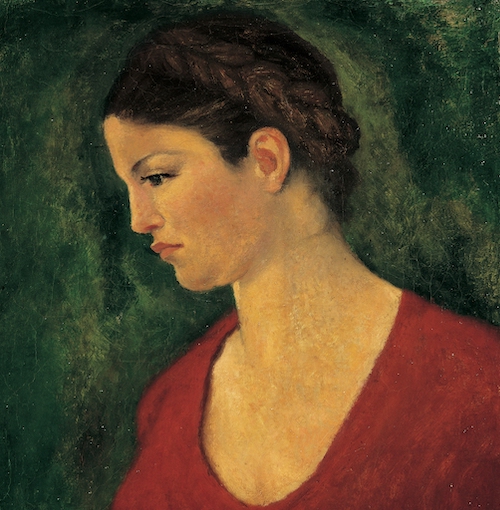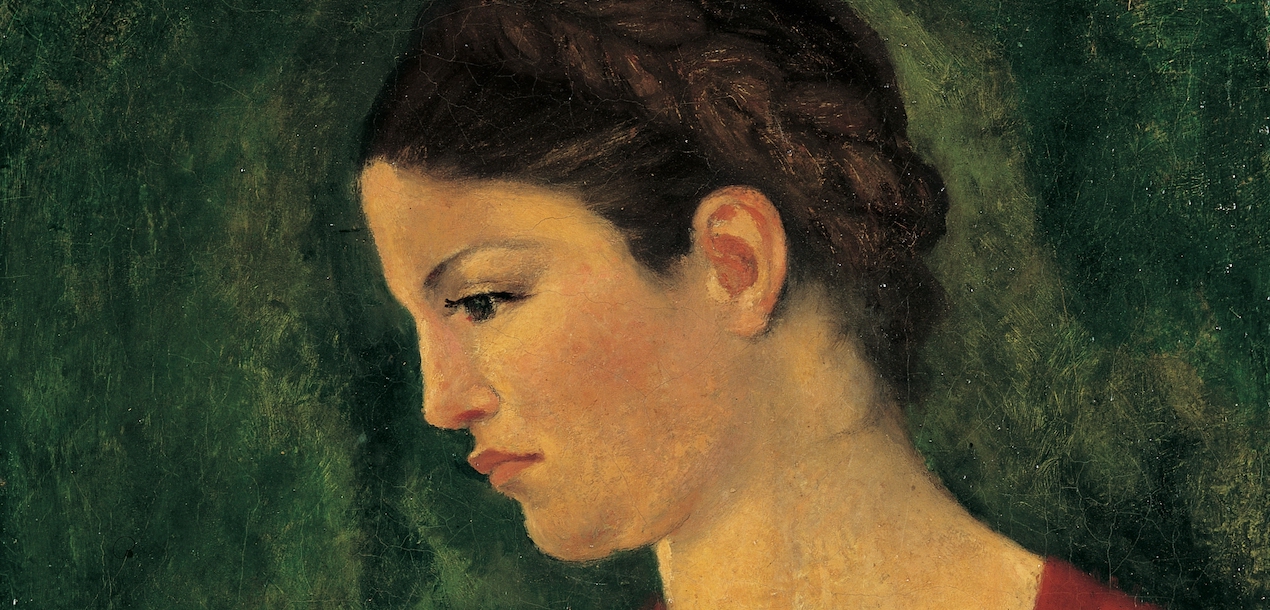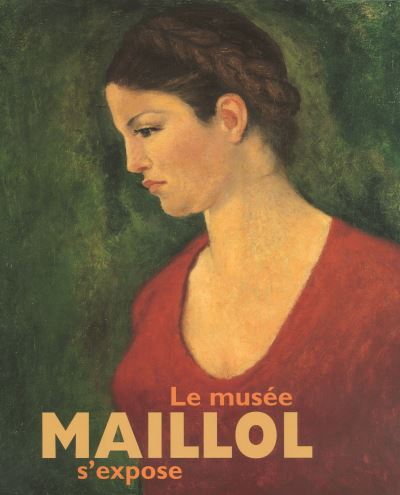En cours
A Venir
Billetterie
Collections en ligne
Actualités
Boutique
Restaurants et privatisation


The Musée Maillol will host an exhibition titled “The Musée Maillol on Display ” from 20 February to 2 June 2008. The show invites visitors to profoundly discover Musée Maillol’s and of Dina Vierny’s collections.
A tension exists between permanent collections that are kept in storage and contemporary exhibitions that monopolizes public interest. Though successful, the steady stream of rotating contemporary exhibitions since the Musée Maillol’s opening in 1995 – almost forty to date – have ultimately overshadowed the diversity of the museum’s permanent collections. A collaboration between The Fondation Dina Vierny and Musée Maillol brings together two museums, two collections, and two diverse approaches to art in one shared space. The Musée Maillol, for instance, offers a deep dive into the major evolutions in Astrid Maillol’s work from his first Nabi canvases inspired by the example of Gauguin to one of his most revered works, his sculpture Harmonie (1940-1944), which remains unfinished. At the same time, the works collected by Dina Vierny throughout her life are displayed alongside the Maillol collection. In order to not only display the collections, but underscore the intersections in history, research and academic significance between the works, we rearranged the permanent collections into a series of exhibitions.
The selection of artists represented in the collection exemplifies modernity and modern art from a female perspective. Dina Vierny shared her approach to modern art with one of the greatest personalities of her time, the man who discovered Picasso before Kahnweiler and made the Douanier Rousseau famous: Wilhelm Uhde (1874-1947). In keeping with the value of Uhde, a revered collector, Dina Vierny researched different pictorial modern primitivism with profound dedication. William Uhde coined the term to refer to the period and style of painting that was first practiced by Le Douanier Rousseau and continued with Séraphine, Rimbert, Bauchant, Bombois, Vivin and Peyronnet. The modern primitives pioneered a genre of art that quickly became obsolete. Adored by painters such as Kandinsky and Picasso, who collected them, the artists associated with the modern primitive movement have since been labeled as naïve painters, popular masters of reality or instinctual, amateur painters. The galleries that showed Primitivism and Abstraction attempted to reconstitute the connections that were originally established between the masters of abstraction and the modern primitives. Advised by Henri Matisse and Jeanne Bucher, her professional mentors, Dina Vierny opened her gallery in 1947 on Rue Jacob in Paris. In 1951, Vierny organized one of the first major solo exhibitions for Serge Poliakoff (1900-1969), who was making his living busking as a guitarist in a traveling band at the time. Poliakoff quickly became one of the great abstract painters of the post-war period, and Dina Vierny collected his works with fervor.
After the war Vierny met Serge Charchoune. Born in Russia, Charchoune (1888-1975) had taken part in various avant-garde movements before moving to Paris in the 1930s, where he pioneered ornamental cubism. Influenced by the purism of Ozenfant, he leaned artistically towards abstraction and saw white as an absolute color, which he often used to create monochrome paintings.
Always attentive to the shifting artistic movements of her time, Dina Vierny took interest in the painters of the Cobra group, who combined primitive art and abstraction. Vierny devoted several exhibitions to Jacques Doucet (1924-1994), the only French painter to have taken part in the founding of the Cobra group centered his artwork around the poet Dotremont.
Dina Vierny chose to exhibit Robert Couturier, who previously collaborated with Maillol on one of his last sculptures, “La Rivière”. Unlike Maillol, Couturier invented what is known as “allusive” sculpture, in which forms are elliptical and place emphasis on outline as opposed to volume. The exhibition also features sculptures by Emile Gilioli, one of the great masters of abstraction in sculpture, and works by Cornelis Zitman, a Dutch sculptor from Venezuela whom Couturier met in the 1960s. Zitman based his work on his observations of blended Caribbean and African populations. Inspired by Picasso, Zitman grappled with an effort for beauty and the temptation to distort. Ultimately, Zitman’s sculptures are at once terrifying and serene.
The exhibition “Marcel Duchamp et ses frères” (Marcel Duchamp and His Brothers), held at the Dina Vierny Gallery in 1988, launched the collections that now bring together the works of the three Duchamp brothers. Raymond Duchamp-Villon was on his way to becoming one of the greatest sculptors of his generation before his untimely death, while Jacques Villon was the inspiration for Section d’Or. Marcel Duchamp is widely known for his collection of ready-mades, which altered the course of modern art history.
After modeling for Henri Matisse and exhibiting her drawings in his gallery, Dina Vierny acquired a number of his art works, which are now on display in the Musée Maillol.
After 1960, Dina Vierny traveled to the Soviet Union, where she met a number of “un-official” painters. In 1973, she presented an exhibition devoted to the Russian avant-garde, featuring works by Oscar Rabine, Ilya Kabakov, Erik Boulatov and Vladimir Yankilevski, all of whom have since become emblems of contemporary Russian art. The Musée Maillol has decided to include an installation by Ilya Kabakov in its permanent collections: “La cuisine communautaire”, an ode to the utopia of collectivism as it transform into a nightmare. Installations are by their very nature ephemeral art, which subsequently become perennial.
As the larger collections are divided into smaller exhibitions, visitors are invited to discover otherwise unknown connections between artists. In this sense, each exhibition becomes a specialized event.
The Musée Maillol will host an exhibition titled “The Musée Maillol on Display ” from 20 February to 2 June 2008. The show invites visitors to profoundly discover Musée Maillol’s and of Dina Vierny’s collections.
A tension exists between permanent collections that are kept in storage and contemporary exhibitions that monopolizes public interest. Though successful, the steady stream of rotating contemporary exhibitions since the Musée Maillol’s opening in 1995 – almost forty to date – have ultimately overshadowed the diversity of the museum’s permanent collections. A collaboration between The Fondation Dina Vierny and Musée Maillol brings together two museums, two collections, and two diverse approaches to art in one shared space. The Musée Maillol, for instance, offers a deep dive into the major evolutions in Astrid Maillol’s work from his first Nabi canvases inspired by the example of Gauguin to one of his most revered works, his sculpture Harmonie (1940-1944), which remains unfinished. At the same time, the works collected by Dina Vierny throughout her life are displayed alongside the Maillol collection. In order to not only display the collections, but underscore the intersections in history, research and academic significance between the works, we rearranged the permanent collections into a series of exhibitions.
The selection of artists represented in the collection exemplifies modernity and modern art from a female perspective. Dina Vierny shared her approach to modern art with one of the greatest personalities of her time, the man who discovered Picasso before Kahnweiler and made the Douanier Rousseau famous: Wilhelm Uhde (1874-1947). In keeping with the value of Uhde, a revered collector, Dina Vierny researched different pictorial modern primitivism with profound dedication. William Uhde coined the term to refer to the period and style of painting that was first practiced by Le Douanier Rousseau and continued with Séraphine, Rimbert, Bauchant, Bombois, Vivin and Peyronnet. The modern primitives pioneered a genre of art that quickly became obsolete. Adored by painters such as Kandinsky and Picasso, who collected them, the artists associated with the modern primitive movement have since been labeled as naïve painters, popular masters of reality or instinctual, amateur painters. The galleries that showed Primitivism and Abstraction attempted to reconstitute the connections that were originally established between the masters of abstraction and the modern primitives. Advised by Henri Matisse and Jeanne Bucher, her professional mentors, Dina Vierny opened her gallery in 1947 on Rue Jacob in Paris. In 1951, Vierny organized one of the first major solo exhibitions for Serge Poliakoff (1900-1969), who was making his living busking as a guitarist in a traveling band at the time. Poliakoff quickly became one of the great abstract painters of the post-war period, and Dina Vierny collected his works with fervor.
After the war Vierny met Serge Charchoune. Born in Russia, Charchoune (1888-1975) had taken part in various avant-garde movements before moving to Paris in the 1930s, where he pioneered ornamental cubism. Influenced by the purism of Ozenfant, he leaned artistically towards abstraction and saw white as an absolute color, which he often used to create monochrome paintings.
Always attentive to the shifting artistic movements of her time, Dina Vierny took interest in the painters of the Cobra group, who combined primitive art and abstraction. Vierny devoted several exhibitions to Jacques Doucet (1924-1994), the only French painter to have taken part in the founding of the Cobra group centered his artwork around the poet Dotremont.
Dina Vierny chose to exhibit Robert Couturier, who previously collaborated with Maillol on one of his last sculptures, “La Rivière”. Unlike Maillol, Couturier invented what is known as “allusive” sculpture, in which forms are elliptical and place emphasis on outline as opposed to volume. The exhibition also features sculptures by Emile Gilioli, one of the great masters of abstraction in sculpture, and works by Cornelis Zitman, a Dutch sculptor from Venezuela whom Couturier met in the 1960s. Zitman based his work on his observations of blended Caribbean and African populations. Inspired by Picasso, Zitman grappled with an effort for beauty and the temptation to distort. Ultimately, Zitman’s sculptures are at once terrifying and serene.
The exhibition “Marcel Duchamp et ses frères” (Marcel Duchamp and His Brothers), held at the Dina Vierny Gallery in 1988, launched the collections that now bring together the works of the three Duchamp brothers. Raymond Duchamp-Villon was on his way to becoming one of the greatest sculptors of his generation before his untimely death, while Jacques Villon was the inspiration for Section d’Or. Marcel Duchamp is widely known for his collection of ready-mades, which altered the course of modern art history.
After modeling for Henri Matisse and exhibiting her drawings in his gallery, Dina Vierny acquired a number of his art works, which are now on display in the Musée Maillol.
After 1960, Dina Vierny traveled to the Soviet Union, where she met a number of “un-official” painters. In 1973, she presented an exhibition devoted to the Russian avant-garde, featuring works by Oscar Rabine, Ilya Kabakov, Erik Boulatov and Vladimir Yankilevski, all of whom have since become emblems of contemporary Russian art. The Musée Maillol has decided to include an installation by Ilya Kabakov in its permanent collections: “La cuisine communautaire”, an ode to the utopia of collectivism as it transform into a nightmare. Installations are by their very nature ephemeral art, which subsequently become perennial.
As the larger collections are divided into smaller exhibitions, visitors are invited to discover otherwise unknown connections between artists. In this sense, each exhibition becomes a specialized event.

Le Musée Maillol
s'expose
The Musée Maillol will host an exhibition titled “The Musée Maillol on Display ” from 20 February to 2 June 2008. The show invites visitors to profoundly discover Musée Maillol’s and of Dina Vierny’s collections.
A tension exists between permanent collections that are kept in storage and contemporary exhibitions that monopolizes public interest. Though successful, the steady stream of rotating contemporary exhibitions since the Musée Maillol’s opening in 1995 – almost forty to date – have ultimately overshadowed the diversity of the museum’s permanent collections. A collaboration between The Fondation Dina Vierny and Musée Maillol brings together two museums, two collections, and two diverse approaches to art in one shared space. The Musée Maillol, for instance, offers a deep dive into the major evolutions in Astrid Maillol’s work from his first Nabi canvases inspired by the example of Gauguin to one of his most revered works, his sculpture Harmonie (1940-1944), which remains unfinished. At the same time, the works collected by Dina Vierny throughout her life are displayed alongside the Maillol collection. In order to not only display the collections, but underscore the intersections in history, research and academic significance between the works, we rearranged the permanent collections into a series of exhibitions.
The selection of artists represented in the collection exemplifies modernity and modern art from a female perspective. Dina Vierny shared her approach to modern art with one of the greatest personalities of her time, the man who discovered Picasso before Kahnweiler and made the Douanier Rousseau famous: Wilhelm Uhde (1874-1947). In keeping with the value of Uhde, a revered collector, Dina Vierny researched different pictorial modern primitivism with profound dedication. William Uhde coined the term to refer to the period and style of painting that was first practiced by Le Douanier Rousseau and continued with Séraphine, Rimbert, Bauchant, Bombois, Vivin and Peyronnet. The modern primitives pioneered a genre of art that quickly became obsolete. Adored by painters such as Kandinsky and Picasso, who collected them, the artists associated with the modern primitive movement have since been labeled as naïve painters, popular masters of reality or instinctual, amateur painters. The galleries that showed Primitivism and Abstraction attempted to reconstitute the connections that were originally established between the masters of abstraction and the modern primitives. Advised by Henri Matisse and Jeanne Bucher, her professional mentors, Dina Vierny opened her gallery in 1947 on Rue Jacob in Paris. In 1951, Vierny organized one of the first major solo exhibitions for Serge Poliakoff (1900-1969), who was making his living busking as a guitarist in a traveling band at the time. Poliakoff quickly became one of the great abstract painters of the post-war period, and Dina Vierny collected his works with fervor.
After the war Vierny met Serge Charchoune. Born in Russia, Charchoune (1888-1975) had taken part in various avant-garde movements before moving to Paris in the 1930s, where he pioneered ornamental cubism. Influenced by the purism of Ozenfant, he leaned artistically towards abstraction and saw white as an absolute color, which he often used to create monochrome paintings.
Always attentive to the shifting artistic movements of her time, Dina Vierny took interest in the painters of the Cobra group, who combined primitive art and abstraction. Vierny devoted several exhibitions to Jacques Doucet (1924-1994), the only French painter to have taken part in the founding of the Cobra group centered his artwork around the poet Dotremont.
Dina Vierny chose to exhibit Robert Couturier, who previously collaborated with Maillol on one of his last sculptures, “La Rivière”. Unlike Maillol, Couturier invented what is known as “allusive” sculpture, in which forms are elliptical and place emphasis on outline as opposed to volume. The exhibition also features sculptures by Emile Gilioli, one of the great masters of abstraction in sculpture, and works by Cornelis Zitman, a Dutch sculptor from Venezuela whom Couturier met in the 1960s. Zitman based his work on his observations of blended Caribbean and African populations. Inspired by Picasso, Zitman grappled with an effort for beauty and the temptation to distort. Ultimately, Zitman’s sculptures are at once terrifying and serene.
The exhibition “Marcel Duchamp et ses frères” (Marcel Duchamp and His Brothers), held at the Dina Vierny Gallery in 1988, launched the collections that now bring together the works of the three Duchamp brothers. Raymond Duchamp-Villon was on his way to becoming one of the greatest sculptors of his generation before his untimely death, while Jacques Villon was the inspiration for Section d’Or. Marcel Duchamp is widely known for his collection of ready-mades, which altered the course of modern art history.
After modeling for Henri Matisse and exhibiting her drawings in his gallery, Dina Vierny acquired a number of his art works, which are now on display in the Musée Maillol.
After 1960, Dina Vierny traveled to the Soviet Union, where she met a number of “un-official” painters. In 1973, she presented an exhibition devoted to the Russian avant-garde, featuring works by Oscar Rabine, Ilya Kabakov, Erik Boulatov and Vladimir Yankilevski, all of whom have since become emblems of contemporary Russian art. The Musée Maillol has decided to include an installation by Ilya Kabakov in its permanent collections: “La cuisine communautaire”, an ode to the utopia of collectivism as it transform into a nightmare. Installations are by their very nature ephemeral art, which subsequently become perennial.
As the larger collections are divided into smaller exhibitions, visitors are invited to discover otherwise unknown connections between artists. In this sense, each exhibition becomes a specialized event.
Multimédia
Mentions légales | CGU | Données personnelles | Gestion des cookies
Musée Maillol, 2021
Mentions légales | CGU | Données personnelles | Gestion des cookies
Musée Maillol, 2021